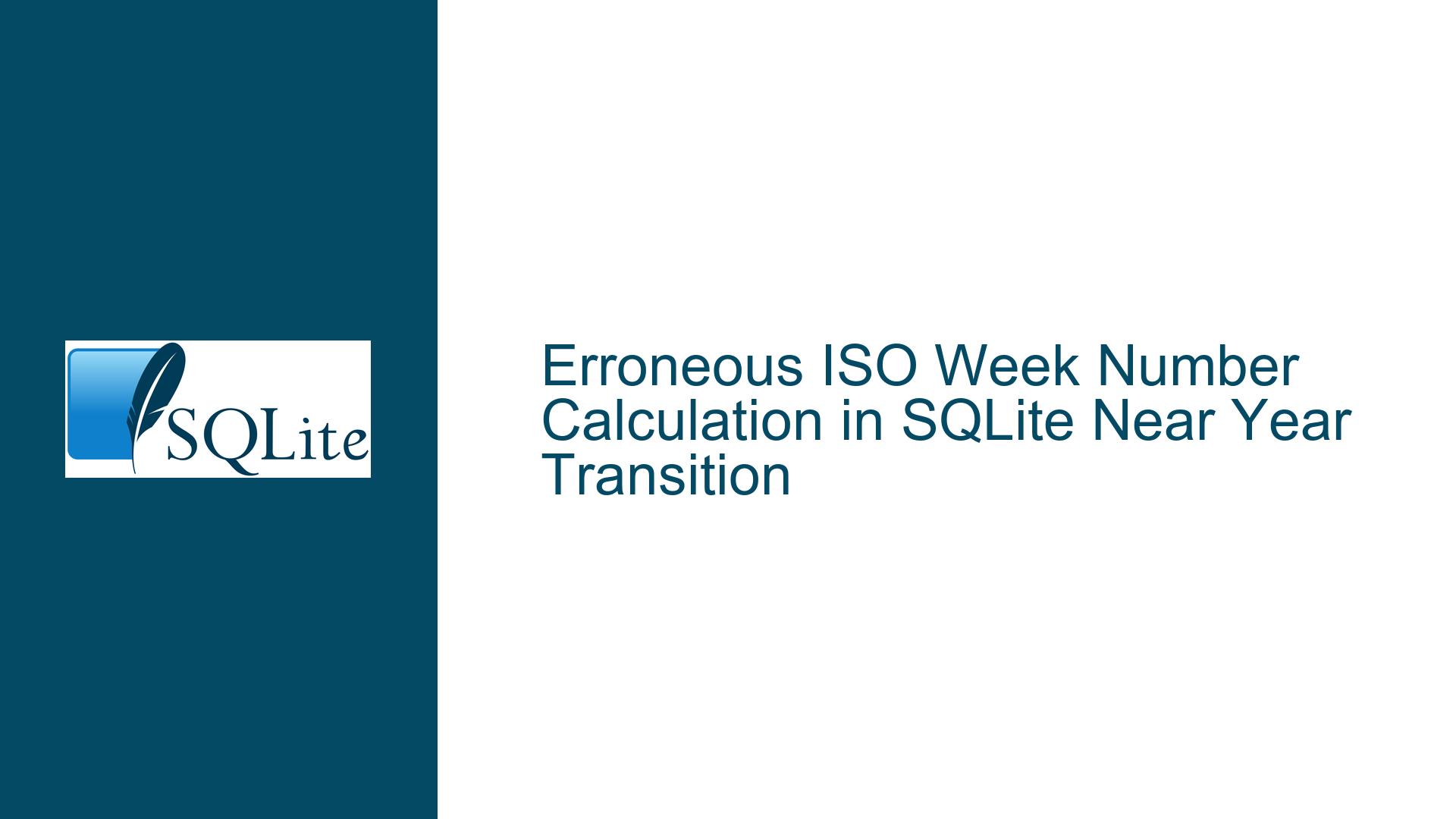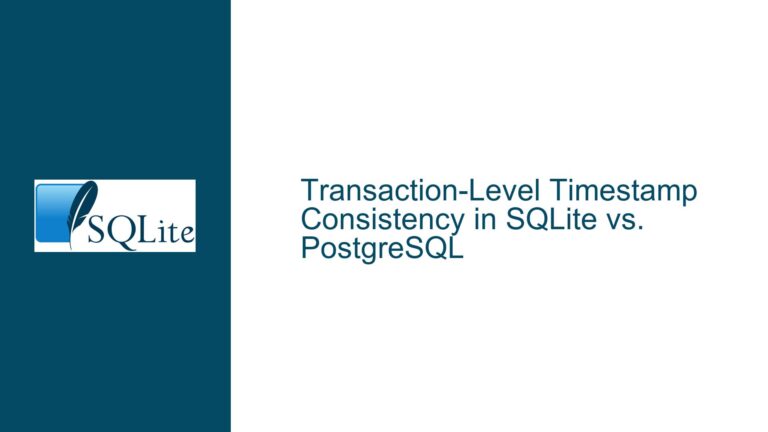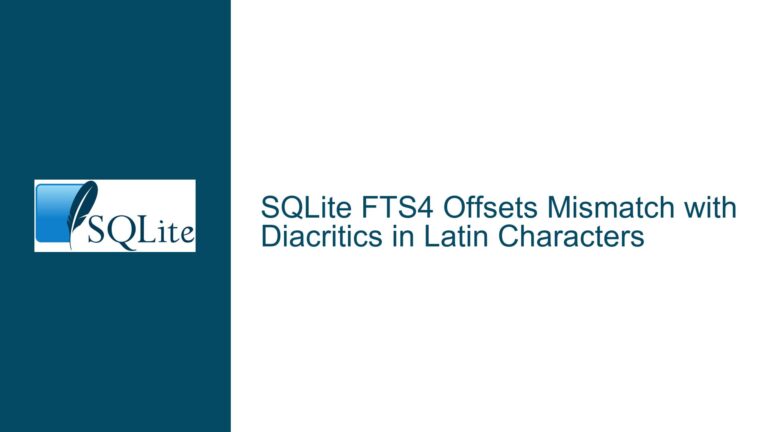Erroneous ISO Week Number Calculation in SQLite Near Year Transition
Understanding ISO Week Number Calculation and SQLite’s Behavior
The ISO week date system is a part of the ISO 8601 date and time standard, which is widely used in computing and business applications. It defines a week as starting on Monday and assigns a week number to each week of the year. The first week of the year is the one that contains the first Thursday of the Gregorian calendar year. This means that the ISO week number can differ from the traditional week number, especially around the transition between years. For example, January 1st might belong to the last week of the previous year if it falls on a Friday, Saturday, or Sunday.
In SQLite, the strftime function is used to format dates and times. The %G and %V format specifiers are intended to return the ISO year and ISO week number, respectively. However, the behavior of these specifiers, particularly around the year transition, has been a source of confusion and errors. The issue arises when the week number returned by strftime('%V', date) does not align with the expected ISO week number, especially for dates around January 1st. This discrepancy can lead to incorrect data interpretation and processing, particularly in applications that rely on accurate week-based calculations, such as financial reporting, project management, and data analysis.
The core of the problem lies in how SQLite handles the transition between years when calculating ISO week numbers. Specifically, the strftime function may return unexpected results for dates in the first few days of January, depending on the day of the week on which January 1st falls. For instance, if January 1st is a Sunday, it should belong to the last week of the previous year (week 52 or 53), but SQLite might incorrectly assign it to week 01 of the new year. This behavior is inconsistent with the ISO 8601 standard and can cause significant issues in applications that depend on accurate week numbering.
The Role of %W vs. %V in SQLite’s Date Formatting
The confusion between %W and %V in SQLite’s strftime function is a critical aspect of the issue. The %W format specifier returns the week number of the year, where the first Monday of the year is considered the start of week 01. This is different from the ISO week number, which is returned by %V. The ISO week number is defined such that the first week of the year is the one that contains the first Thursday of the year. This means that the ISO week number can differ from the traditional week number, especially around the year transition.
In the context of the problem, the use of %W instead of %V can lead to incorrect week number assignments, particularly for dates around January 1st. For example, if January 1st is a Sunday, %W might return week 00, which is not a valid ISO week number. This can cause confusion and errors in applications that expect ISO-compliant week numbers. The correct approach is to use %V for ISO week numbers, but even then, there can be discrepancies due to how SQLite handles the year transition.
The issue is further complicated by the fact that SQLite’s behavior may vary depending on the underlying C library used for date and time calculations. Different operating systems and C libraries may implement the ISO week number calculation differently, leading to inconsistencies in the results returned by SQLite. This variability makes it difficult to ensure consistent behavior across different platforms and environments, adding another layer of complexity to the problem.
Troubleshooting and Resolving ISO Week Number Issues in SQLite
To address the issue of erroneous ISO week number calculations in SQLite, it is essential to understand the root cause and implement appropriate solutions. The first step is to ensure that the correct format specifier, %V, is used for ISO week numbers. This will align the week number calculation with the ISO 8601 standard and reduce the likelihood of errors around the year transition.
However, even with the correct format specifier, there may still be discrepancies due to how SQLite handles the year transition. One approach to mitigate this issue is to use a custom SQL function or a case statement to correct the week number assignment for dates around January 1st. For example, if strftime('%V', date) returns week 00, it can be manually adjusted to week 52 or 53 of the previous year, depending on the specific date and the rules of the ISO week date system.
Another approach is to use a combination of %G and %V to ensure that the year and week number are correctly aligned. For example, if strftime('%V', date) returns week 01 but the date is still part of the previous year according to the ISO week date system, the year can be adjusted accordingly. This can be done using a case statement or a custom function that checks the day of the week for January 1st and adjusts the year and week number as needed.
In addition to these technical solutions, it is important to thoroughly test the date and time calculations in SQLite, particularly around the year transition. This includes testing with different dates, time zones, and underlying C libraries to ensure consistent behavior across different environments. By understanding the nuances of ISO week number calculation and implementing appropriate solutions, it is possible to resolve the issue of erroneous week number assignments in SQLite and ensure accurate and reliable date and time processing in your applications.






